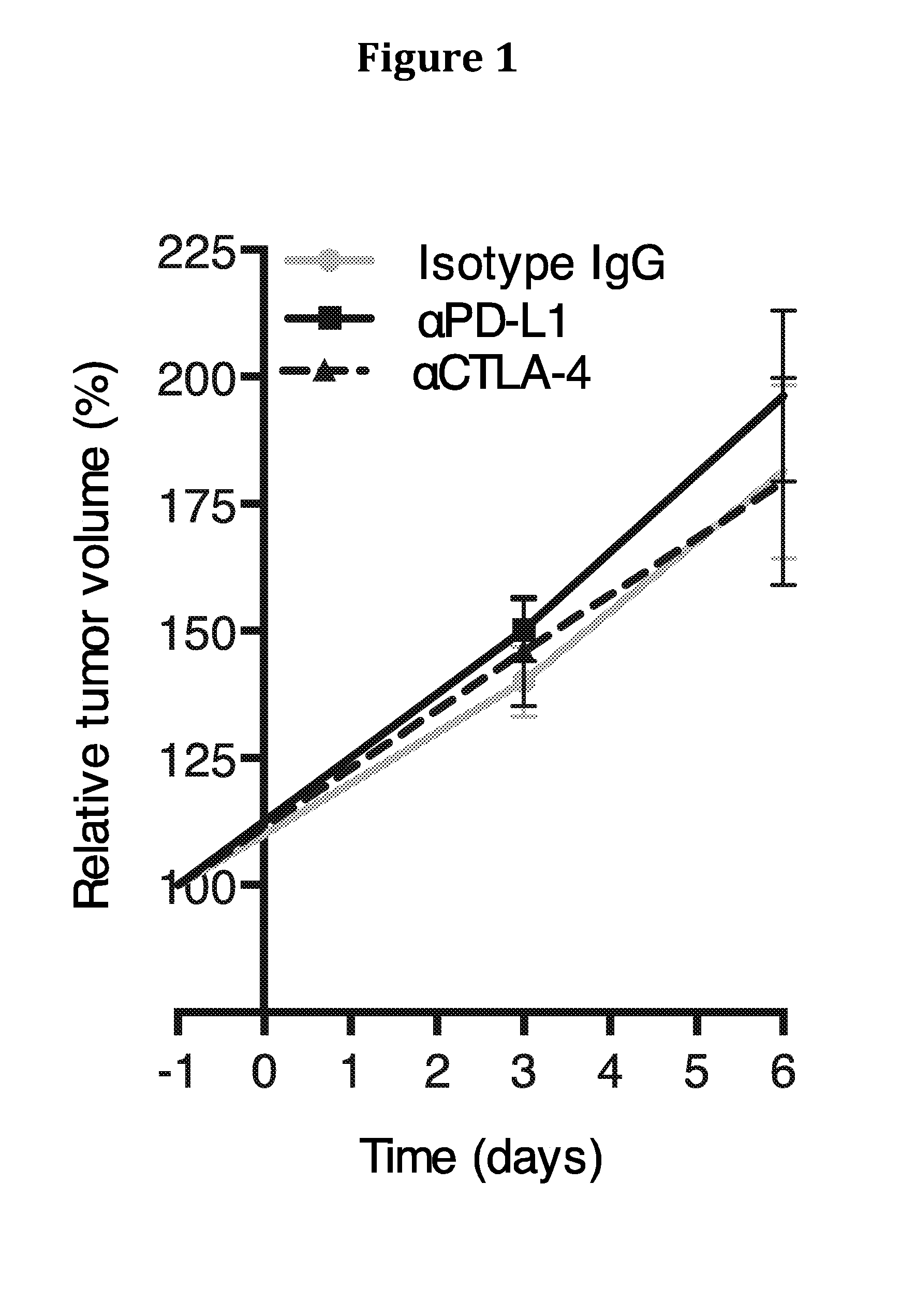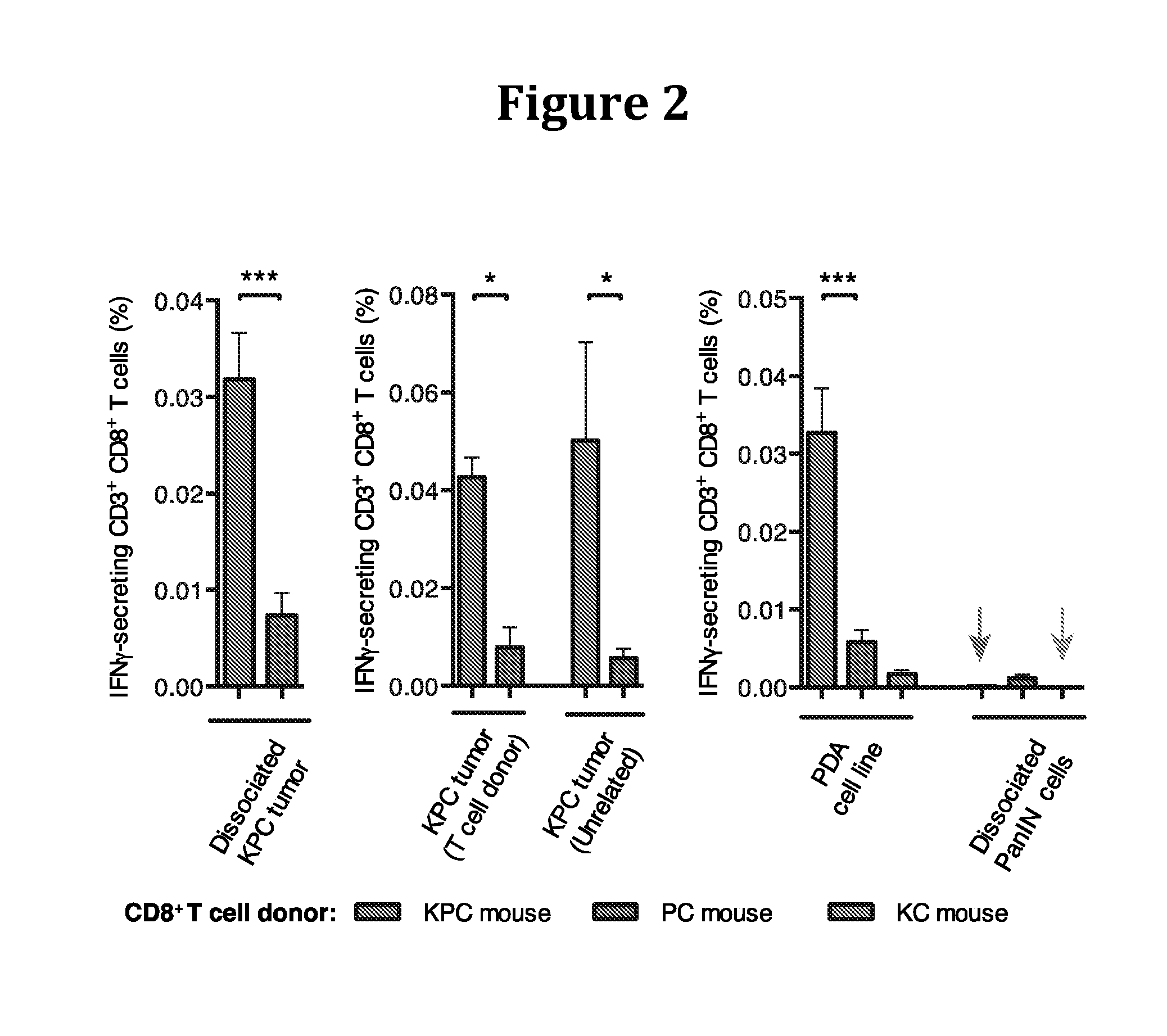Inhibition of cxcr4 signaling in cancer immunotherapy
a cancer immunotherapy and cxcr4 technology, applied in the field of tumor treatment, can solve the problems of drug resistance and cancer progression invariably, and it is difficult to predict whether a particular cancer will respond to a particular chemotherapeutic agent, and achieve the effects of reducing immune suppression, increasing the proximity of t cells, and reducing the exclusion of t cells
- Summary
- Abstract
- Description
- Claims
- Application Information
AI Technical Summary
Benefits of technology
Problems solved by technology
Method used
Image
Examples
example 1
FAP+ Cells are Responsible for Immune Suppression
[0194]The mesenchymal tumoral stromal cell that is identified by its expression of the membrane protein, FAP, was shown recently to mediate immunosuppression in a transplanted tumor model (8). As FAP+ stromal cells are present in human PDA (9), we investigated whether this immunosuppressive activity of the murine FAP+ stromal cell might be involved in the resistance of this cancer to immunotherapy. In the present study, we demonstrate that the autochthonous KPC (LSL-KrasG12D / +; LSL-Trp53R172H / +;Pdx-1-Cre) model of PDA (10) replicates the resistance of human PDA to checkpoint antagonists, despite the presence of systemic anti-PDA immunity. This failure of immunosurveillance is attributable to local immunosuppression mediated by the FAP+ stromal cell.
[0195]In the KPC model, Cre-mediated expression of Trp53R172H and KrasG12D is targeted to the pancreas, causing the development of invasive and metastatic carcinoma that recapitulates many ...
example 2
The Activity of FAP+ Cells is Mediated by CXCL12
[0205]Therapy involving the depletion of FAP+ cells is precluded by their essential roles in normal tissues (12), and a therapeutic target that accounts for their immunosuppression must be identified. We noted from immunofluorescent confocal microscopy, that there was a paucity of CD3+ T cells, but not CD11b+ myelomonocytic cells, in the vicinity of cancer cells, a characteristic also of human PDA that is associated with FAP+ cells and other carcinomas (14, 15).
[0206]This T cell trafficking problem directed attention to the chemokine, CXCL12, which was observed by confocal immunofluorescent microscopy to localize to cancer cells in both human (13) and murine PDA.
[0207]We identified the source of CXCL12 as the tumoral FAP+ cell (FIG. 7), as has been previously reported for CAFs (16).
[0208]LL2 / OVA tumors were excised from C57BL / 6 mice, single cell suspensions prepared by enzymatic digestion, stained with antibodies to FAP, CD45, CD31, an...
PUM
| Property | Measurement | Unit |
|---|---|---|
| Electrical resistance | aaaaa | aaaaa |
| Sensitivity | aaaaa | aaaaa |
| Frequency | aaaaa | aaaaa |
Abstract
Description
Claims
Application Information
 Login to View More
Login to View More - R&D
- Intellectual Property
- Life Sciences
- Materials
- Tech Scout
- Unparalleled Data Quality
- Higher Quality Content
- 60% Fewer Hallucinations
Browse by: Latest US Patents, China's latest patents, Technical Efficacy Thesaurus, Application Domain, Technology Topic, Popular Technical Reports.
© 2025 PatSnap. All rights reserved.Legal|Privacy policy|Modern Slavery Act Transparency Statement|Sitemap|About US| Contact US: help@patsnap.com



